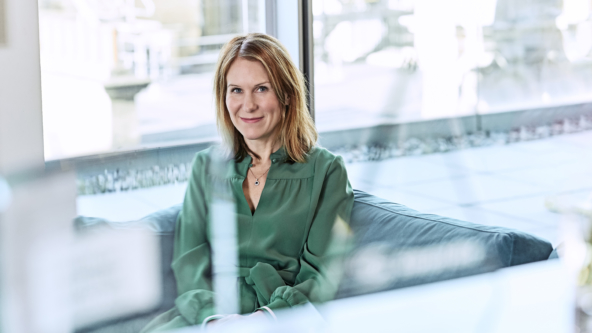Given the chance, many of us would like to change the world in some way – whether it’s wiping out poverty, curing illness, or protecting the environment. Yet as individuals, we often feel too insignificant to make a difference. That our efforts, no matter how great, won’t stand the test of time.
We all have the capacity to change the world in positive ways. Big changes can be made by the smallest of groups, and sometimes even the youngest of minds.
When children seize the initiative
Take William Kamkwamba. When he was just 15 years old, he built a wind turbine to electrify his family home in Malawi. He now builds solar-powered water pumps that bring fresh water to some of the poorest villages in his country.
Then there’s the UK’s Zea Tongeman. When Zea was 14, she designed an app encouraging young people to get ‘jazzed’ about recycling. And three girls from Ireland, after learning about the 2011 famine in the Horn of Africa, discovered a strain of bacteria that increases crop yields by up to 74% (which earned them the grand prize at the 2014 Google Science Fair).
Change often comes from seeing old problems in a new light, which is why fresh perspectives from young, bright minds can be so powerful. This is why our Energy Investments team jumped at the opportunity to help the talented students at Ken Stimpson Community School, Peterborough, tackle the UN’s 17 Sustainable Development Goals.
These ambitious targets are designed to focus governments on improving welfare, protecting the environment, and creating better lives. Students had studied the goals prior to our visit, and were divided into 17 groups of 10-12 students, one group per Goal.
The UN’s challenge
Octopus owns and operates the Wryde Croft wind farm, located just 10 miles from the school. So, as a local investor in the sustainable economy, we tasked ten Year 8 pupils with one of the trickiest Goals on the list: Decent Work and Economic Growth. In the UN’s own words, Decent Work and Economic Growth strives to “Promote inclusive and sustainable economic growth, employment, and decent work for all.”
With over 2 billion people struggling to survive on an income of less than $2 per day, there’s a clear need for jobs that pay a living wage that ensures people can afford basics such as housing, food, and clothing.
But the UN’s Goal is not just about improving working conditions and creating new jobs. It demands equal opportunities for everyone, regardless of age, gender, or race, and access to education, training, and career guidance to prepare young people for in-demand jobs and and skills.
This is why our day at Ken Stimpson Community School was so valuable. It gave students insight into real world problems and showed them the challenge of creating decent work opportunities and economic growth in their own communities.
How the children responded
Natalia Paraskevopoulou manages Wryde Croft wind farm (among others) as part of the Octopus Energy Investments team. She began the day by helping students explore what “decent work” was. How would they define it? What are the examples of “decent work”? Did their families have “decent work”? What factors affected whether work was decent or not? Which were most important?
Having answered these questions, the students began thinking about who was responsible for creating and maintaining decent work. Which organizations, governmental bodies, and institutions did it fall upon to create decent work and make it accessible to everyone?
By adopting the role of Ambassadors, Designers, Researchers, Archivists, and Secretary Generals, the students devised practical ways of ensuring decent work and sustainable economic growth in the Peterborough area.
The Researcher would propose ideas to promote the Goal, the Lead Designer would bring these ideas to life through illustration or a specific project, the Ambassadors would find ways to make this spread far and wide, the Archivist recorded discussions, and the General Secretary signed off on the big decisions.
Despite having limited “real world” work experience, the students were full of enthusiasm, offering interesting ideas on both the characteristics of decent work and the means to achieve it. United by a common aim, they listened to each other’s ideas, debating their relative merits and refining them under Natalia’s guidance, until finally, they’d written a robust plan for sustainable economic development in their own community.
Seeing the world’s problems through a child’s eyes
Watching the students at Ken Stimpson Community School work so well together made us wonder why governments and businesses find it so hard. Of course, the stakes are higher, but could there also be a lack of imagination? A weariness or cynicism from seeing so little change?
Perhaps all it takes to create brighter futures is uniting talented, optimistic, and energetic minds in common purpose. It worked for the students, and who knows, maybe inspired the next generation of young people to change the world.


